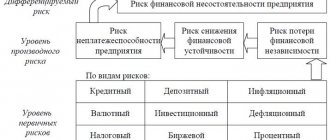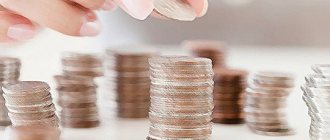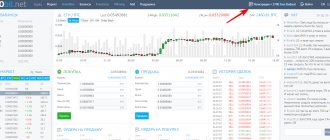The cash flow statement process can be one of the most challenging issues, whether you are using US GAAP (if you are in the US) or IFRS (if you are in one of the more than 120 countries around the world. applying IFRS).
Many people have problems preparing cash flow because:
- This is the only accounting report generated on a cash basis rather than an accrual basis;
- Report items must be adjusted to exclude non-cash transactions, which can be quite difficult.
It may seem very complicated, but make no mistake, people make far more serious mistakes in the accounting process than they do in cash flow.
Let's look at the indirect method of preparing a cash flow statement in accordance with IAS 7. This method only works if you are aware of the following issues:
- You already know what a cash flow statement is and its components (main activities, investments, financial activities and results).
- You understand the basics of cash flow, the relationships between major financial statements (balance sheet, income statement, etc.), accounting itself, etc.
- You have access to various credentials. Sometimes you will need to make some adjustments, and you will be much more comfortable if you can quickly access the information you need.
- You remain calm and can concentrate on this wonderful task without nerves or stress.
[cm. See also full text of IAS 7]
Let's look at an example of a systematic approach for preparing a cash flow statement in Excel .
Keep in mind, this is only a demonstration of how cash flow can be done indirectly "by hand", step by step, and not an explanation of the details of individual adjustments or other technical details.
See also:
- CFA - Preparation of the Cash Flow Statement (Part 1): Relationship to the Balance Sheet and Operating Activities.
- CFA - Preparation of cash flow statement (Part 2): investment and financing activities, total cash flow.
- CFA - Direct and indirect methods of presenting cash flow from operating activities.
A simplified scheme for calculating cash flows from the implementation of an investment project:
Thus, the cash flow of the project can be simplified by the following algorithm:
- Investments;
- Revenue growth;
- Increase/decrease in operating expenses (without depreciation);
- Changes in depreciation charges;
- Change in income before tax (clause 2 – clause 3 – clause 4);
- Change in income tax (item 5 * 20%);
- Change in net profit (clause 5 – clause 6);
- Changes in depreciation charges;
- Net income from the implementation of the investment project (cash flow from operating activities) (item 7+item 8).
It should be noted that it is the change in indicators that appears in the algorithm. This is due to the fact that only indicators for the new project should be taken into account.
For example : If you decide to open another direction within an existing business, then investments, revenue, current costs, etc., must be taken only for this new business.
That is, if you, for example, had a confectionery shop that produced cakes, and you decided to launch a line for the production of cakes, then both revenue and costs to assess the effectiveness of the project must be taken in this direction.
This is understandable, because the company already received revenue from the sale of the cake. From a business point of view, the effectiveness of the new project is interesting.
Cash Flow Statement or Cash Flow
Cash flow shows cash receipts and payments associated with the main items of income and expenses. Those lines in the report form that will not be used in this project remain empty.
The cash flow statement consists of three sections:
Cash flow from operating activities - cash receipts and payments related to sales, production, tax payments, operations for the placement of temporarily free funds. Production costs are combined into two groups: total direct costs and total fixed costs.
Cash flow from investment activities is cash flows associated with the investment period of the project.
Cash flow from financial activities - cash flows from operations related to project financing.
The two final lines of the Cash Flo table reflect the presence/absence of funds in the account or cash register at the beginning and end of each period. The cash balance allows you to judge the company's ability to generate sufficient cash to cover its obligations. In case of a shortage of funds, it is necessary to attract additional sources of financing in the form of debt or equity capital.
Profit and Loss Statement
Analysis of the profit and loss statement allows you to determine the structure of the company's income and costs and obtain an objective assessment of its production and commercial activities.
Balance report
The balance sheet reflects the structure of assets, liabilities and equity of the enterprise at each stage of the project.
Financial indicators
By themselves, individual financial ratios do not provide sufficient information, but by analyzing them over a period of time and comparing them with the values of similar indicators of other companies operating in the same industry, it is possible to assess the development trends of the enterprise.
Table 3.8.
Cash Flow Statement Form
| Line title | Content |
| Sales proceeds | 1. Receipts from the sale of finished products, described in the “Sales” dialogue. Amounts are displayed at the time of receipt of money in the account with VAT. 2. “Other receipts” attributed to sales. |
| Costs of materials and components | 1. Costs for the purchase of materials and components, described in the “Production” dialog, in the “Materials and Components” and “Other Costs” sections and in the “Materials and Components” dialog. Costs are indicated at the time of payment including VAT. 2. “Other payments” attributed to direct costs. |
| Piece wage costs | Costs of piecework wages. Amounts are indicated at the time of payment, excluding payroll taxes (taxes are displayed in the “Taxes” line). |
| Total direct costs | The sum of rows 2 + 3 of this table. |
| General costs | Costs described in the “Total Costs” dialog. Amounts are displayed at the time of actual payment (taking into account delayed payments), including VAT. |
| Personnel costs | The costs described in the “Personnel Plan” dialog. Amounts are displayed at the time of actual payment (taking into account delayed payments), excluding payroll taxes (taxes are displayed in the “Taxes” line). |
| Total fixed costs | Calculated by the formula: line 5 + 6. |
| Investments in short-term securities | Balance of funds invested and withdrawn from short-term (<365 days) securities. See the “Starting Balance / Securities” and “Investments” dialogs. |
| Income from short-term securities | Interest earned on short-term securities. |
| Other receipts | “Other income” with the option “Attribute to item: Other income”. VAT INCLUDED. |
| Other payments | “Other payments” with the option “Pay as: Other costs”. VAT INCLUDED. |
| Taxes | All tax payments. This line may have negative values if the tax settings indicate “Overpaid VAT: refunded.” |
| Cash flow from operating activities | Calculated using the formula: 1 + 9 + 10 – 4 – 7 – 8 – 11 – 12 |
| Asset acquisition costs | Payments for investment plan stages related to assets. |
| Other costs of the preparatory period | Payments for non-asset stages of an investment plan. |
| Proceeds from the sale of assets | Proceeds from the sale of assets of the starting balance and investment plan. |
| Acquisition of ownership rights (shares) | Investing in long-term (> 365 days) securities. See the “Starting Balance / Securities” and “Investments” dialogs. |
| Sale of property rights | Funds withdrawn from long-term securities. |
| Income from investment activities | Interest earned on long-term securities. |
| Cash flow from investment activities | Calculated using the formula: 16 + 18 + 19 – 14 – 15 – 17. |
| Own (share) capital | Payments described in the “Share Capital” dialog (the amounts described in the table are indicated here, and not the value of the shares received). |
| Loans | Proceeds from loans (dialog “Loans”). |
| Loan repayments | Payments to repay loans (dialogues “Starting balance / Loans” and “Loans”). |
| Interest payments on loans | Payment of interest (dialogs “Starting balance / Loans” and “Loans”). |
| Leasing payments | All payments on leasing loans |
| Dividend payments | Dividends on ordinary and preferred shares. |
| Cash flow from financial activities | Calculated using the formula: 21 + 22 – 23 – 24 – 25. |
| Cash balance at the beginning of the period | For the first month of the project, it is equal to the amount of funds in the account in the starting balance. In the future, it is equal to the cash balance at the end of the period for the previous month. |
| Cash balance at the end of the period | Calculated using the formula: 27 + 13 + 20 + 26. |
Table 3.9.
Profit and loss report form
| Line title | Content |
| Gross Sales | Total sales volume for all products excluding VAT. |
| Losses | Sales losses specified in the Sales dialog. |
| Sales taxes | Taxes described in the “Taxes” block and having the bases “Sales volume” and “Export sales volume”. |
| Net sales | Calculated using the formula: 1 - 2 - 3. |
| Materials and components | Direct costs of production, described in the “Production” dialogue, in the sections “Materials and Components” and “Other Costs”. Costs are indicated without VAT at the time of delivery of the product to the buyer. |
| Piece wages | Direct costs of production, described in the “Production” dialogue, in the “Piece-piece wages” section. Including taxes on salary |
| Total direct costs | Calculated by the formula: 5 + 6 |
| Gross profit | Calculated using the formula: 4 – 7 |
| Property tax | Taxes described in the “Taxes” block and having the “Property” base. |
| Administrative costs | Payments described in the “Management” section of the “General Costs” dialog. Amounts are indicated excluding VAT. |
| Production costs | Payments described in the "Production" section of the "Total Costs" dialog. |
| Marketing costs | Payments described in the Marketing section of the General Costs dialog. |
| Administrative staff salaries | Payments described in the “Management” section of the “Personnel Plan” dialog. Including taxes on salary. |
| Salary of production personnel | Payments described in the “Production” section of the “Staff Plan” dialog. Including taxes on salary. |
| Marketing staff salary | Payments described in the “Marketing” section of the “Staff Plan” dialog. Including taxes on salary. |
| Total fixed costs | Calculated using the formula: 10+11+12+13+14+15 |
| Depreciation | Amounts of depreciation of assets of the starting balance sheet and investment plan (with the exception of assets for which depreciation is charged to direct costs) |
| Interest on loans | 1. Interest on loans (dialogues “starting balance/loans”, “loans” 2. “Other payments” with the option “Pay as: interest on loans” 3. Payment of the principal debt on lease loans |
| Total non-production costs | Calculated using the formula 17+18 |
| Other income | “Other income” with the option “Attribute to item: Other income” |
| Other costs | 1. Other payments with the option “pay as: other costs” 2. Costs for the stages of the investment plan that are not related to assets 3. Losses when selling an asset at a price less than its residual value. |
| Losses of previous periods | This part of the accumulated losses of previous periods is displayed here, the write-off of which is carried out in the current month. |
| Profit before tax | Calculated using the formula: 8-9-16-19-20-21-22. |
| Total costs charged to profit | 1. Part of the interest on loans exceeding the refinancing rate multiplied by 1.1 (if the assignment of interest is set to “Taking into account the refinancing rate”). 2. “General costs” and “Other payments” for which the “Paid from profit” flag is set in the “Taxes” dialog. |
| Profit from exchange rate difference | 1. Profits/losses resulting from delays in payments upon sale. 2. Profits/losses resulting from changes in the exchange rate during the existence of securities in the second currency 3. Profits/losses resulting from changes in the exchange rate during the existence of loans in the second currency. |
| Taxable income | Calculated using the formula: 23-24-25. |
| Income tax | Taxes described in the “Taxes” block and having a “Profit” base. |
| Net profit | Calculated using the formula: 23-25-27. |
Table 3.10.
Balance report form
| Line title | Content |
| Cash | Line 28 from the Cash Flow Statement |
| Accounts receivable | 1. Invoices issued for goods delivered for which money has not yet been received (described by delayed payments in the Sales dialog). 2. Accounts receivable described in the Starting Balance. |
| Raw materials, materials and components | 1. Materials and components purchased, but not yet used in production (excluding VAT). 2. Initial inventories of materials and components described in the Starting Balance Sheet. |
| Unfinished production | Materials and components used in production that is not yet completed at the end of the period. |
| Finished goods inventories | 1. Cost of manufactured products in the warehouse 2. Initial inventories of finished products described in the Starting Balance Sheet |
| Bank deposits and securities | Securities with a maturity < 12 months, described in the “Investments” and “Starting Balance / Securities” dialogs. |
| Short-term prepaid expenses | 1. Prepayment for materials and components, general costs and personnel. 2. Overpayment of VAT 3. Assets of the “Prepaid expenses” type with a depreciation period < 12 months. |
| Total current assets | Calculated using the formula: 1 + 2 + 3 + 4 + 5 + 6 + 7 |
| Fixed assets | Calculated by the formula: 10 + 11 |
| Accumulated depreciation | Accumulated depreciation on all project assets, including depreciation of starting balance assets. |
| Residual value of fixed assets | Calculated using the formula: 12 + 13 + 14 + 15 + 16 |
| Earth | Residual value of assets described in the investment plan with the “Land” type and in the “Starting Balance / Land” dialog. |
| Buildings and constructions | The residual value of assets described in the investment plan with the type “Buildings and structures” and in the dialogue “Starting balance / Buildings and structures”, as well as leased property put on the balance sheet as “Buildings and structures”. |
| Equipment | The residual value of assets described in the investment plan with the “Equipment” type and in the “Starting balance / Equipment” dialog, as well as leased property put on the balance sheet as “Equipment”. |
| Prepaid expenses | Residual value of assets described in the investment plan with the “Prepaid Expenses” type and in the “Starting Balance / Prepaid Expenses” dialog, which have a depreciation period > 12 months. |
| Other assets | The residual value of assets described in the investment plan with the “Other assets” type and in the “Starting balance sheet / Intangible assets” dialog, as well as leased property put on the balance sheet as “Other assets”. |
| Investments in fixed assets | Unfinished investments, i.e. accumulated payments for stages of the investment plan related to unfinished assets. |
| Investments in securities | Securities with a maturity of > 12 months, described in the “Investments” and “Starting Balance / Securities” dialogs. |
| Property under lease | The value of property received under leasing loans. This includes only property that is not accounted for on the tenant’s balance sheet in the standard way (when the corresponding option is enabled in the “Bank. Accounting System” dialog). |
| Total asset | Calculated using the formula: 8 + 11 + 17 + 18 + 19 |
| Deferred tax payments | 1. Accrued but not yet paid taxes. 2. Taxes payable as described in the Starting Balance. |
| Short-term loans | Borrowed funds that must be repaid within the next year. |
| Accounts payable | 1. Debt to suppliers for materials and components. 2. Debt for general costs and personnel. 3. Accounts payable as described in the Starting Balance. |
| Advances received | 1. Advances from buyers against future deliveries (dialogue “Sales”). 2. Advances described in the Starting Balance. |
| Total current liabilities | Calculated using the formula: 21 + 22 + 23 + 24 |
| Long-term loans | Borrowed funds that must be repaid within a period of > 12 months. |
| Ordinary shares | The par value of the common shares described in the “Share Capital” and “Starting Balance/Share Capital” dialogs. |
| Preference shares | The par value of the preferred shares described in the “Share Capital” and “Starting Balance/Share Capital” dialogs. |
| Capital contributed in excess of par value | The difference between the amounts paid by shareholders and the par value of the shares received. |
| Reserve funds | 1. Accumulated amounts of profit used to form reserves. 2. Initial reserve funds described in the Starting Balance Sheet. 3. Accumulated Other payments for which “Pay as: expenditure of reserves” is set are deducted from these amounts. |
| Extra capital | Capital received from the revaluation of assets (see the “List of Assets” dialog). |
| retained earnings | Accumulated profit (Profit and Loss Statement, line 28) minus accumulated losses of previous periods. |
| Total net worth | Calculated using the formula: 27 + 28 + 29 + 30 + 31 + 32 |
| Total liability | Calculated using the formula: 25 + 26 + 33 |
Types of cash flow and calculation methods
Cash flows can be classified on various grounds. In accordance with international financial reporting standards, there are three types of Cash Flow:
- From operational activities.
- From investment activities.
- From financial activities.
Operational Cash Flow
Operating cash flow reflects a company's ability to generate real cash from its ongoing operations. This type includes:
- Tributaries, i.e. revenue from the sale of goods, services and works.
- Outflows are expenses for the purchase of raw materials, materials, payment of taxes, interest on loans, payment of salaries to employees, etc.
How is it calculated:
OP = EBITDA – taxes +/– change in working capital
Let me remind you that EBITDA is earnings before interest, taxes, depreciation and amortization.
Investment
Investment cash flow is associated with the company's investment activities and includes:
- Inflows – proceeds from the sale of assets.
- Outflows – capital investments in construction, modernization, reconstruction, purchase of fixed assets and intangible assets.
How is investment Cash Flow calculated:
IP = proceeds from the sale of assets - capital expenditures - expenses for the purchase of financial assets
Financial
This flow is associated with changes in the company's capital and includes:
- Tributaries, i.e. proceeds from the issue of securities, subsidies, grants, loans, etc.;
- Outflows – repurchase of shares, repayment of loans, bonds, payment of dividends and coupons.
How is financial cash flow calculated:
FP = proceeds from the issue of the Central Bank + other funds raised – loan payments – repayment of bonds – share repurchase – coupons – dividends
There are two other types of cash flow that are of interest to investors:
- Clean.
- Free.
Let's consider them separately.
Clean flow
For all three of the above types of cash flow, the difference between inflows and outflows is calculated. The sum of the resulting values from each type of Cash Flow is called net cash flow.
It shows how effectively the company manages its capital and whether it has money for dividend payments.
How is net cash flow calculated:
PE = OP + IP + FP
Free
This type of flow shows how much cash a company has left after all expenses and capital investments.
How free cash flow is calculated:
SP = PE – capital costs
How to calculate net cash flow
Procedure for calculating cash flow
How to calculate cash flow:
- Determine the period for which the calculation will be made.
- Determine the purpose for which cash flow calculation is necessary.
- Select income items and calculate their total value.
- Select expense items and calculate their total value.
- Use one of the formulas for calculating cash flow.
First of all, it is worth saying that cash flow is calculated in relation to certain time periods.
☝️
As a rule, at the very beginning of the company’s work, the forecasted cash flow is calculated monthly, starting from the second year - quarterly, then annually.
For the calculation, current data is taken at the beginning or end of the zero segment.
When calculating cash flow, different types of prices can be used:
- Current, i.e. current on the day of calculation without taking into account inflation indicators;
- Forecasted - the forecasted inflation rate multiplied by current prices is used for calculation;
- Deflated - uses forecast prices divided by the underlying inflation index.
Typically, cash flow is calculated in the currency in which the company conducts its main activities.
The main methods for calculating a company's cash flow are direct and indirect. The first one is used more often, since the calculation uses the main accounting documents. As a result, you can see what “status” the company’s cash flow is in: inflow (when income exceeds expenses) or outflow (when expenses exceed income).
Cash flow formula
Calculation of cash flow using a formula
Depending on the purpose for which the calculation is needed and how accurate it must be, there are three cash flow formulas and, accordingly, three methods of calculation.
Method one.
It takes into account only two indicators: net cash flow received from core activities and core expenses.
Formula:
FCF = ChDP - Salary,
Where
- FCF - cash flow;
- NPV - net cash flow;
- Salary is the main production cost.
Method two.
Based on its results, it is possible to determine the reasons that led to a change in cash flow. Formula:
FCF = EBITDA - NP - ZP
- IOK,
where
- EBITDA - earnings before interest, taxes, depreciation and amortization costs;
- NP - income tax;
- IOC - changes in working capital (NWC, Net working capital change).
Method three.
Used to make forecasts.
FCF = EBIT*(1-tax) + FOR -
ZP - IOK,
where
- FOR - depreciation costs.
About the concept
Cash flow (from the English Cash Flow, or cash flow) is a set of financial receipts and expenses in any activity during a certain billing period.
Cash Flow is often abbreviated to "CF". Despite the fact that in translation this means “cash flow,” in practice, not only cash is taken into account, but also all types of income and expenses.
The concept of cash flow is applicable to different areas
Forecast and actual cash flows
In this article, I deliberately focus on two aspects of the Cash Flow methodology. First, we are interested in project planning and investment analysis. The cash flows of an investment project are necessarily planned, and after this, the project’s cash flow plan or FIB is approved, becoming an imperative requirement for financiers to comply with it. Together with the project balance sheet plan, the PDDS forms the basis for a preliminary assessment of the effectiveness of investments. During the period of execution of the project task and upon its closure, monitoring and evaluation are carried out on the basis of the ODDS and the project balance sheet.
Secondly, it is imperative to understand the elementary essence of accounting or accounting practice for managers, which is based on reading the company's budget plans and financial statements. The financial planning system is a budget system. The financial reporting system is a security block for accounting and official reporting of an enterprise as required by law. The latter includes:
- balance sheet (form No. 1);
- profit and loss statement (form No. 2);
- cash flow statement (form No. 4, presented below).
Fragment of the form according to OKUD 0710004 – ODDS of a commercial organization. Part 1
Fragment of the form according to OKUD 0710004 – ODDS of a commercial organization. Part 2
Fragment of the form according to OKUD 0710004 – ODDS of a commercial organization. Part 3
ODDS as a reporting form performed using the cash flow method is a very important management tool; an example of it for the oil industry is given at the end of the section. The significance of this report is especially relevant in modern conditions, when the sufficiency of companies' funds is subjected to serious tests. Current (operating) activities from the position of financial flows act as a donor for two other types of activities. And if we talk about the conditional regulatory limit of net cash flows from current activities (NCFO), then we can say that it tends to the value +∞. In contrast, the net cash flow from investing activities (NCFI) tends to -∞.
An intermediate position is occupied by NCFF (net cash flow of DS from financing activities). In a historical perspective equal to the company’s strategic cycle, the limit of this indicator tends to zero. Perhaps even slightly below zero due to dividend payments. Why is this happening? Investments, essentially, are the past or future net profit of a company invested in its development. NCFO is a conditional prototype of the profits of the past, and for the future we take out loans (NCFF), which we took and must be repaid in full ruble. This explains the NCFF level of 0 on average.
Fragment of the consolidated statements regarding ODDS for 2015.
Fragment of the consolidated statements regarding ODDS for 2015. Continued
Practical application in investing
When choosing an issuer to invest in its securities, an investor pays attention to the free cash flow indicator. If it is positive, then the company has free funds for dividend payments, debt repayment and share repurchase.
All of the above can affect quotes.
If free cash flow is negative, it means the business has more expenses than income. And this is not always bad, as it might seem at first glance.
For example, if a company has a large-scale investment program that requires significant cash injections, free flow will be negative.
For some issuers, you may notice that there is net profit, but free flow is zero or has a negative value. This can happen due to the profit calculation formula, which takes into account depreciation, exchange rate differences, etc.
Reporting records paper income, while cash flow represents the movement of real money.
For some companies, free cash flow is the basis for calculating dividend payments. Therefore, after the release of their reports, you can immediately calculate the approximate amount of dividends.
Data for calculations can be found in the “Consolidated Statement of Cash Flows” under IFRS.
Purpose of the cash flow indicator
Cash flow is calculated to identify the efficiency of the company's distribution of finances . It helps to estimate the volume of inflows and outflows for the reporting period. The CF ratio is also determined for the purpose of presenting the company’s activities to potential and actual investors. In this case, the actual, causal and planned indicators are calculated.
Thus, calculating cash flow has the following goals:
- assess the financial position of the enterprise;
- analyze the volume of outflows and inflows;
- explore the efficiency of resource allocation;
- show the real position of the company.
Important! Russian companies are required to calculate only the net cash flow from core, financial and investment activities, which is reflected in the statement of financial turnover.
What does cash flow show?
The value of cash flow
Cash flow data is of particular value to investors, since the document allows you to see how much of the total amount of funds remains at the company's disposal and how much went to cover expenses.
Based on this, a distinction is made between positive cash flows (showing the inflow of money) and negative (showing the outflow of money). Accordingly, based on this data, investors can determine how profitable it is to invest in such a company.
Positive cash flow
Positive cash flow is funds that flow into the company, i.e. influx of money into the enterprise.
Positive cash flow is formed by the following income items:
- Revenue from the sale of goods;
- Income from the provision of services;
- Part of the profit received if the company participates in a common business with other enterprises;
- Dividends and interest payments;
- Investor deposits;
- Free assistance from charitable organizations;
- Difference from exchange rates.
Negative cash flow
Negative cash flow
Negative cash flow is the money spent by the company to cover various expenses and expenses, i.e. outflow of money from the company.
Negative cash flow is formed by the following types of payments:
- Cost of production;
- Wage;
- Equipment depreciation;
- Research;
- Improving working conditions;
- Household expenses;
- Taxes.











